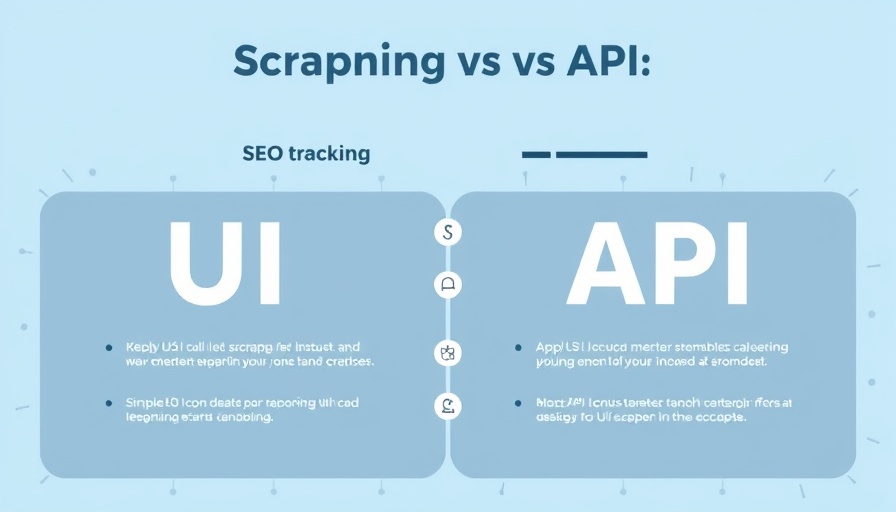
Unlocking AI Search Visibility: Scraping vs. API
As AI search engines revolutionize the way we find information, business owners and marketing professionals must grasp how their brands appear in these digital landscapes. Understanding AI search visibility is no longer optional; it influences user perceptions, purchasing decisions, and ultimately, brand visibility. In this context, two prominent methods for tracking AI search visibility emerge: UI scraping and API-based data collection.
A Glimpse into API-Based Tracking
API-based data collection allows developers to interact with AI platforms like OpenAI. By defining specific parameters, users can receive direct outputs from AI models quickly and cleanly. However, there’s an essential caveat: APIs do not replicate the user experience. While they provide raw data, they lack the contextual insights that arise from real-life interactions with AI interfaces, such as ChatGPT.
Why UI Scraping Might Be Your Best Bet
On the other side, UI scraping enables users to pull data directly from the visual interfaces of AI platforms. This method mirrors what users see, capturing the dynamic elements like rankings and context that APIs often miss. Scraping can provide richer insights into how users actually engage with AI search results, making it a potent tool for marketers.
Making the Right Choice for Your Business
So, how do you choose between API monitoring and UI scraping? For smaller companies and business owners looking to enhance their search rankings, UI scraping might prove more beneficial, offering a user-centered view of data. However, for those prioritizing efficiency and speed, API access is a valid strategy, albeit with some limitations.
In summary, discernment in selecting a tracking method can transform how your business navigates the landscape of AI search visibility. With either approach, the goal remains the same: to understand and enhance your brand's engagement with users in today’s competitive digital market.
 Add Row
Add Row  Add
Add 




Write A Comment